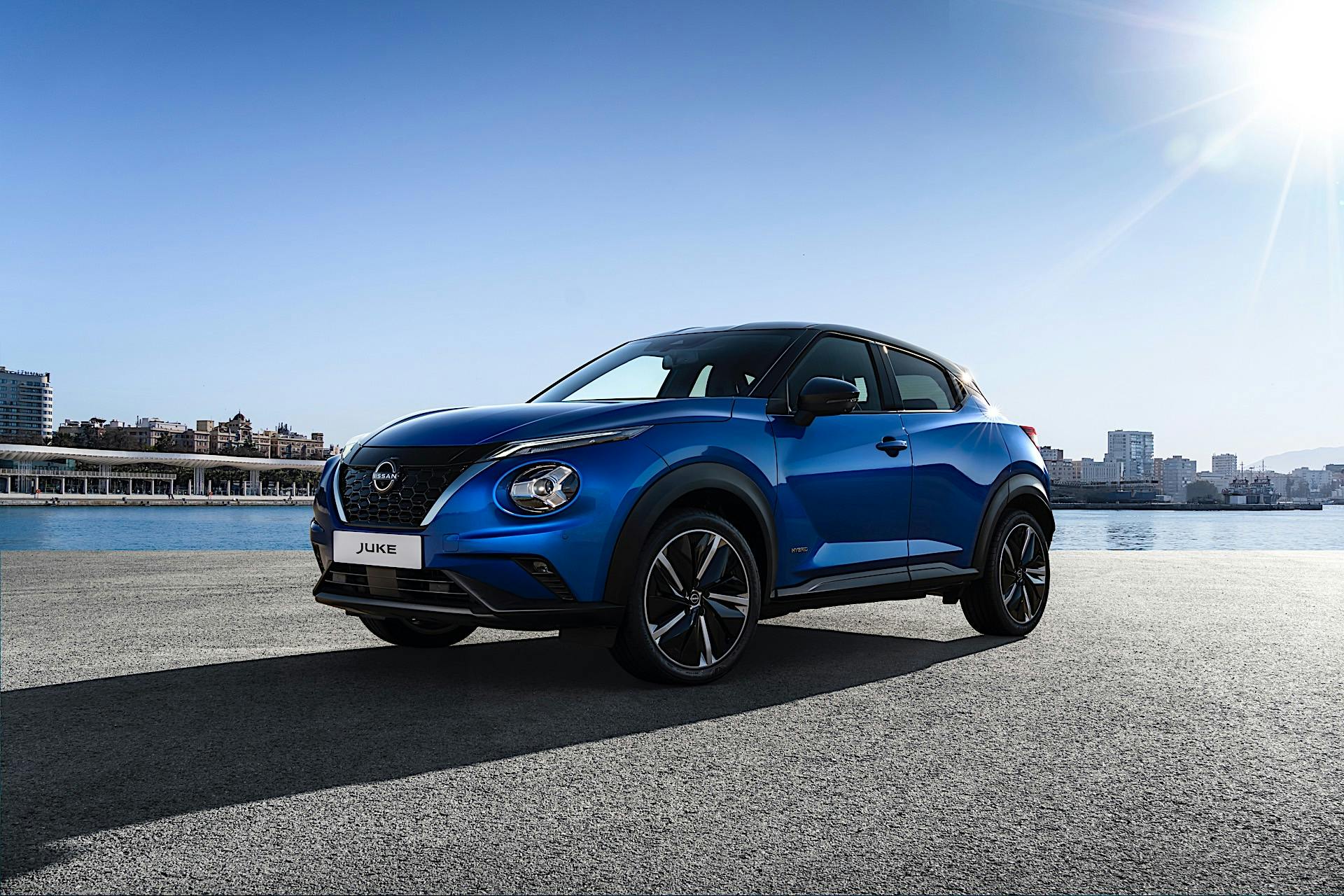Nissan has introduced a new hybrid powertrain and it appears to be a power split setup instead of the series layout used by its current e-Power vehicles. Debuting first on the European market Juke, the Japanese automaker calls this a “true multimodal” hybrid system. The 1.6-liter engine was developed specifically for this hybrid powertrain and makes 94 hp and 109 lb-ft of torque on its own. It is paired with an electric drive motor generating 49 hp and 151 lb-ft, a 15-kW starter generator from Renault, a 1.2-kWh water-cooled lithium-ion battery, and a unique multi-mode transmission. In total, the powertrain provides 25 percent more power than an equivalent internal combustion engine and is estimated to cut fuel consumption by 40 percent in the city and 20 percent in the combined cycle.
One of the key components to Nissan’s new hybrid powertrain is a new low-friction gearbox. It uses dog clutches instead of synchronizer rings to shift four gears for the internal combustion engine and two electric gears. This transmission ditches the traditional clutch and uses the electric motor and starter generator to provide smooth and responsive acceleration. An advanced algorithm controls the gearbox, manages shift points, battery regeneration, and the transitions between series and parallel modes. It will also pick the right type of operation based on how much power is needed.
An intelligent drive system handles the powertrain operation based on multiple parameters and will optimize the amount of time the vehicle spends in all-electric mode. During testing, Nissan revealed that the Juke Hybrid spent 80 percent of its time using the electric motor only for propulsion in city driving and only went to hybrid operation for a short time to recharge the battery. The crossover can also drive in all-electric mode at speeds of up to 34 mph. Although the Juke Hybrid will automatically maximize all-electric mode operation, there’s also a dedicated button to put it in that setting when driving in residential areas, traffic jams, or green zones like schools.
As with most hybrids, the Juke Hybrid will trigger regenerative braking, acting as a generator to capture kinetic energy. That will be turned into electricity and stored in the main drive battery. A Regenerative Cooperative Brake function blends regenerative and traditional friction braking to give you a natural pedal feel and improve energy recovery. The Juke Hybrid will also come with three drive modes: Eco, Normal, and Sport. In addition to changing parameters like steering effort and powertrain response, they also change climate control operation, regenerative braking behavior, and state of charge.
The Juke Hybrid will be one of only a handful of regular hybrids with a great degree of one-pedal driving capability. Nissan’s e-Pedal system, which first appeared on the Leaf, allows the vehicle to begin slowing down once you ease off the accelerator. However, this won’t bring the Juke down to a complete stop and only to a creep at around 3 mph. This will still come in handy during stop-and-go traffic since this slows the vehicle enough that you don’t always have to press the brake pedal in most driving situations. You’ll also be able to maximize the car’s battery regeneration, allowing you to get the most out of the powertrain.
Although the Juke won’t come to North America anytime soon, expect this powertrain to eventually make its way into other vehicles with a different internal combustion engine. This new hybrid system gives us a glimpse at what could power an electrified Nissan Rogue. Instead of the 1.6-liter, Nissan could use their new 1.5-liter VC-Turbo three-cylinder, which was built specifically with hybrid applications in mind.

